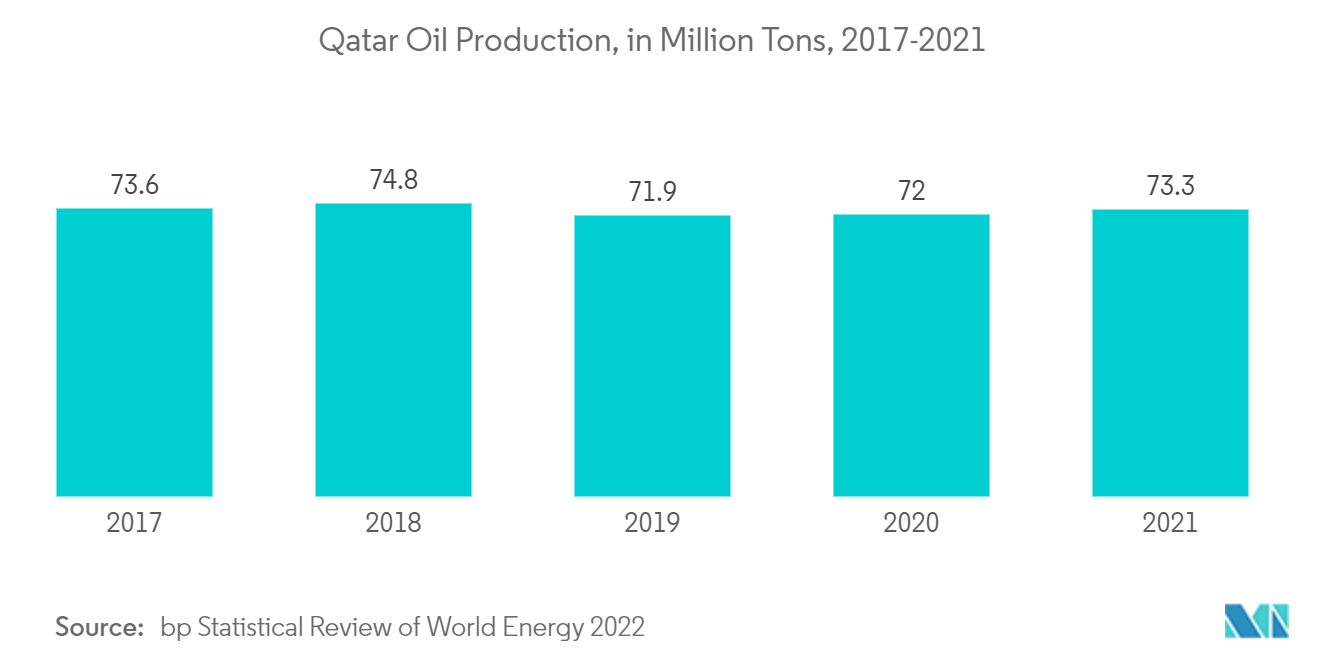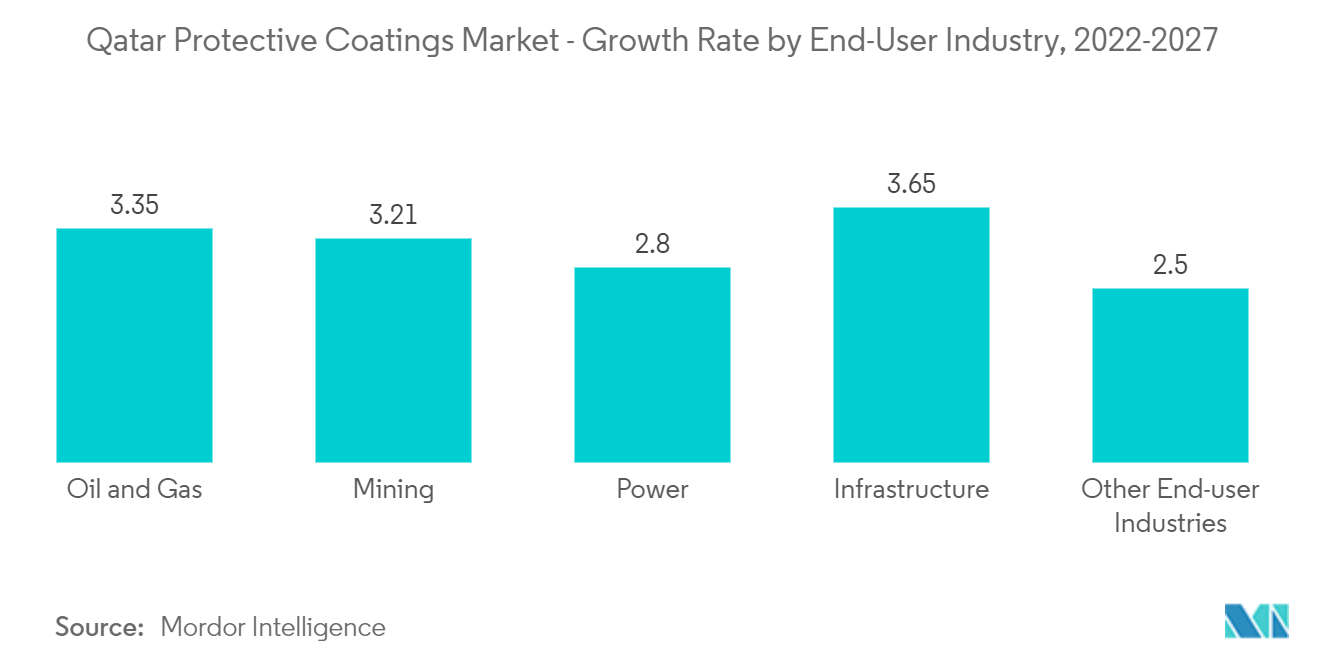Market Trends of Qatar Protective Coatings Industry
This section covers the major market trends shaping the Qatar Protective Coatings Market according to our research experts:
Increasing demand from Qatar’s Oil and Gas industry
- Protective coatings offer excellent corrosion resistance, water resistance, and fire resistance. In the oil and gas industry, protective coatings used for chemical resistance and safety protocols play vital roles in avoiding risks related to damage, accidents, and workers' health.
- In 2021, oil production in Qatar accounted for 73.3 million tons, which registered a 1.7% growth rate as compared to the 72 million tons produced in 2020. However, oil production has stagnated in the past few years. Hence, the country plans to increase its production to meet the upcoming oil demand.
- In February 2021, Italian oilfield services provider Saipem received a letter of award from Qatar gas for developing the North Field Production Sustainability Offshore Project, located in offshore Qatar, worth approximately USD 1.7 billion. Offshore facilities are part of the project's scope, which also includes designing, buying, building, and putting them in place.
- In August 2021, Qatar Petroleum (QP) awarded an engineering, procurement, and construction (EPC) contract to the Spanish engineering firm Tecnicas Reunidas for its North Field Expansion Project. The project consists of four new LNG trains and is expected to start by 2025, with a capacity of 32 million tons per annum (MPTA).
- Also, in January 2022, Qatar Energy gave McDermott International a huge contract for engineering, procurement, construction, and installation for the North Field East Expansion project in the Persian Gulf. This contract was for the offshore facilities.

The infrastructure segment dominates the market
- Protective coatings applied to steel, which is commonly used for civil structures such as stadiums, transportation hubs, and public buildings, are the backbone of modern cities. Corrosion protection of steel bridges is important to maintain structural performance and aesthetics over time, with protective coatings being the most common form of corrosion protection.
- The Qatar National Vision 2030 and the FIFA World Cup 2022 are major drivers for Qatar's infrastructure industry. The ongoing implementation of major development projects across various sectors, including building, hospitality, tourism, transportation, infrastructure, etc., explains Qatar's vision.
- The government is building stadiums for the FIFA World Cup Qatar 2022, with two already operational and the remaining six set to open in 2022.These stadiums include Khalifa International Stadium (completed), Al Janoub Stadium (completed), Al Rayyan Stadium, Al Bayt Stadium, Al Thumama Stadium, Education City Stadium, Lusail Stadium, and Ras Abu Aboud Stadium.
- The government of Qatar said it would spend USD 200 billion on building new rail lines, a brand-new international airport and port, highways with the latest technology, new hotels, and a lot more.
- Lusail City is a key component of Qatar's 2030 Vision. Under the Lusail project, a new city is being built with an overall value of around USD 45 billion. This is estimated to possess 19 multi-purpose residential, entertainment, and commercial districts. The estimated USD 45 billion project is set to extend to 38 square kilometers and include four exclusive islands. Qetaifan Islands are some of the exclusive islands within Lusail City. It was announced that 16 floating hotels would be built on the islands for tourists and fans during the 2022 FIFA World Cup.
The country's market for protective coatings is expected to grow as a result of the above infrastructure projects.


